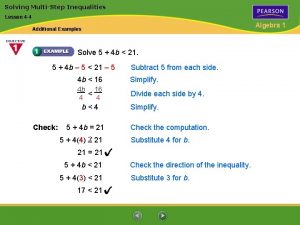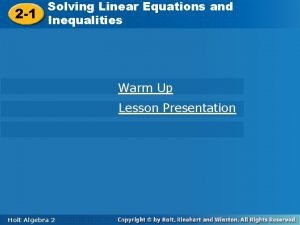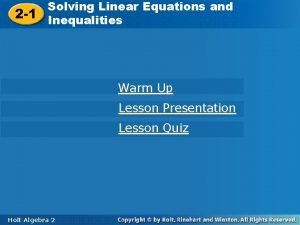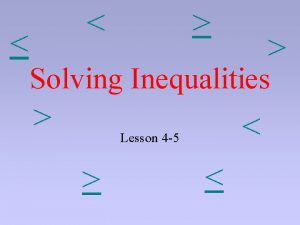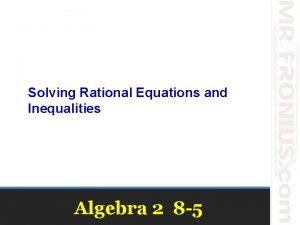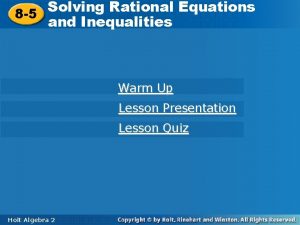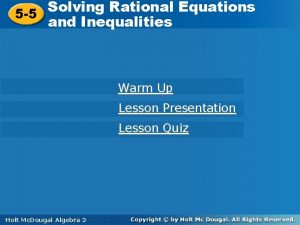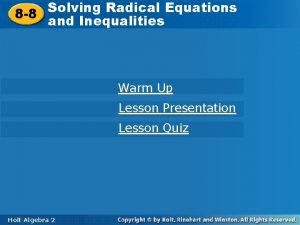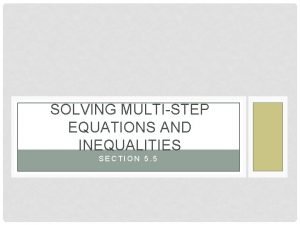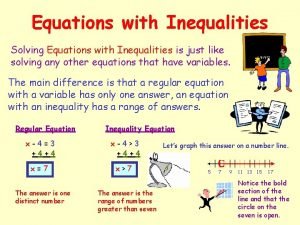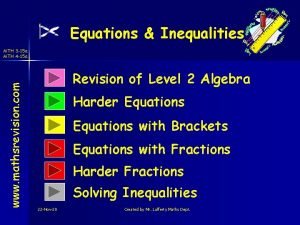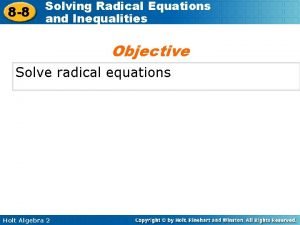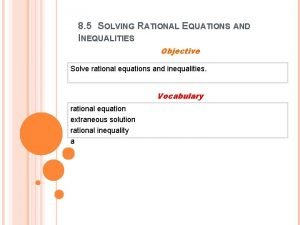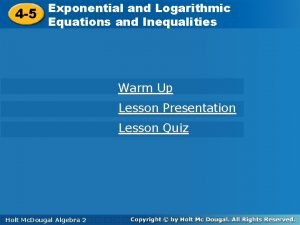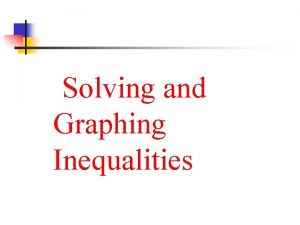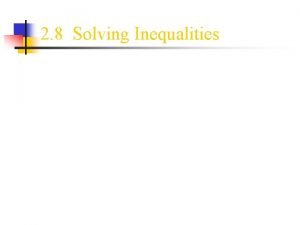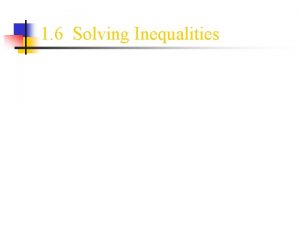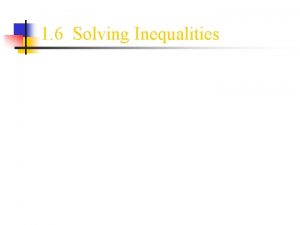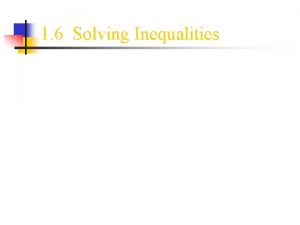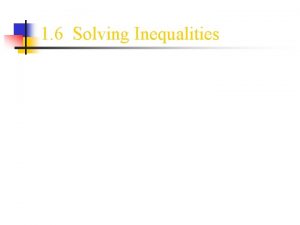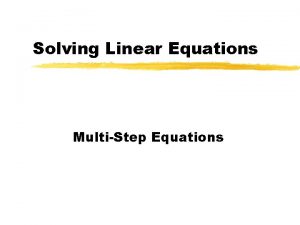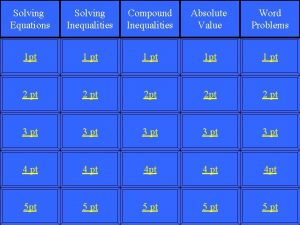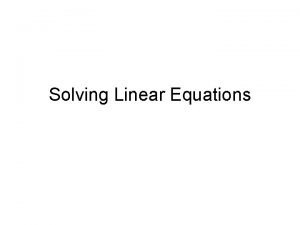P 3 Solving linear equations and linear inequalities















- Slides: 15

P 3: Solving linear equations and linear inequalities

Algebraic Properties of Equality (let u, v, w, and z be real numbers, variables, or algebraic expressions) 1. Reflexive u=u 2. Symmetric If u = v, then v = u 3. Transitive If u = v, and v = w, then u = w 4. Addition If u = v and w = z, then u + w = v + z 5. Multiplication If u = v and w = z, then uw = vz

Solving Equations A linear equation in x is one that can be written in the form ax + b = 0 where a and b are real numbers with a = 0 A solution of an equation in x is a value of x for which the equation is true. à So, how many solutions are there to a linear equation in one variable? ? ?

Let’s practice… Solve for the unknown:

Let’s practice… Solve for the unknown: 8 8

Let’s practice… Solve for the unknown and support with grapher: Now, how do we get graphical support? ? ?

Linear Inequality in x A linear inequality in x is one that can be written in the form ax + b < 0, ax + b > 0, or ax + b > 0 where a and b are real numbers with a = 0 A solution of an inequality in x is a value of x for which the inequality is true. The set of all solutions of an inequality is the solution set of the inequality.

Properties of Inequalities Let u, v, w, and z be real numbers, variables, or algebraic expressions, and c a real number. 1. Transitive If u < v and v < w, then u < w 2. Addition If u < v, then u + w < v + w If u < v and w < z, then u + w < v + z 3. Multiplication If u < v and c > 0, then uc < vc If u < v and c < 0, then uc > vc (the above properties are true for < as well – there are similar properties for > and >)

Guided Practice: ’t n Solve the inequality: o d , ity s e al r i t i u l o a q e y u n tipl !!! q i e n the ul ber i g h m um n i c u lv wit yo n o e s s er tiv n o e t t nev ga h e W rge he n fo n w y a b g i e s id div

Guided Practice: Solve the inequality, write your answer in interval notation, and graph the solution set: – 2 0

Guided Practice Solve the double inequality, write your answer in interval notation, and graph the solution set: (– 7, 5] – 7 0 5

Whiteboard Practice: Solve the inequality, write your answer in interval notation, and graph the solution set: , – 8 – 11 7 – 11/7 0

Whiteboard Practice: Solve the inequality:

Whiteboard Practice: Solve and support with grapher: 12 12 Graphical Support?

Homework: o p. 28 -29 11 -27 odd, 35 -53 odd
 Lesson 4 - solving linear equations and inequalities
Lesson 4 - solving linear equations and inequalities Linear equation and inequalities
Linear equation and inequalities 1-2 lesson quiz solving linear equations
1-2 lesson quiz solving linear equations Lesson 3-2 solving inequalities answers
Lesson 3-2 solving inequalities answers Solving rational equations algebra 2
Solving rational equations algebra 2 8-5 solving rational equations and inequalities
8-5 solving rational equations and inequalities Rational inequality
Rational inequality 6.7 solving radical equations and inequalities
6.7 solving radical equations and inequalities Solving radical inequalities
Solving radical inequalities Solving multi step equations and inequalities
Solving multi step equations and inequalities How to solve inequalities
How to solve inequalities Solving equations and inequalities
Solving equations and inequalities Solving radical equations and inequalities
Solving radical equations and inequalities Rational equation and rational inequalities
Rational equation and rational inequalities Logarithmic equation and inequalities
Logarithmic equation and inequalities 5-5 solving rational equations and inequalities
5-5 solving rational equations and inequalities
